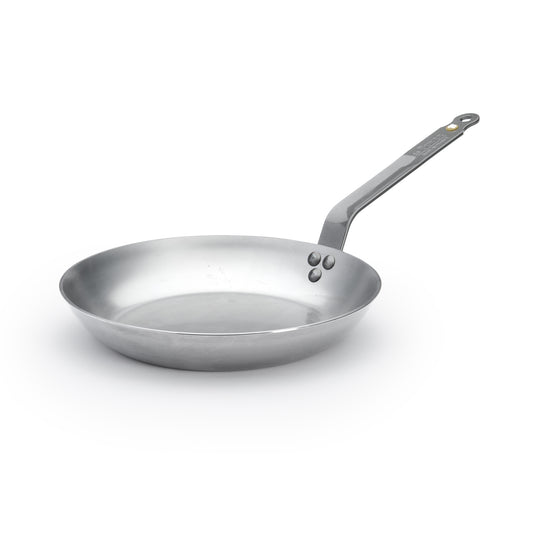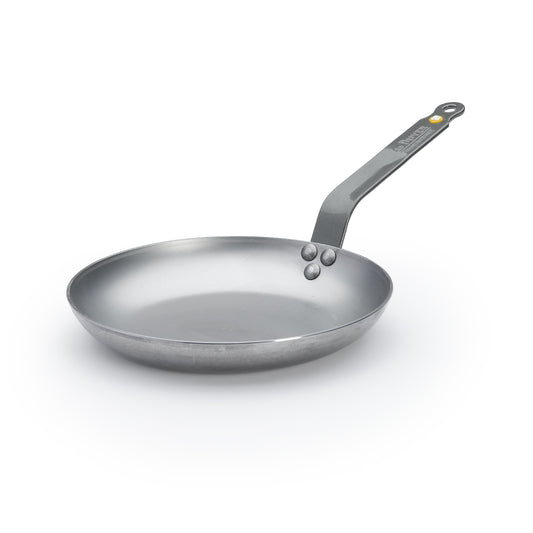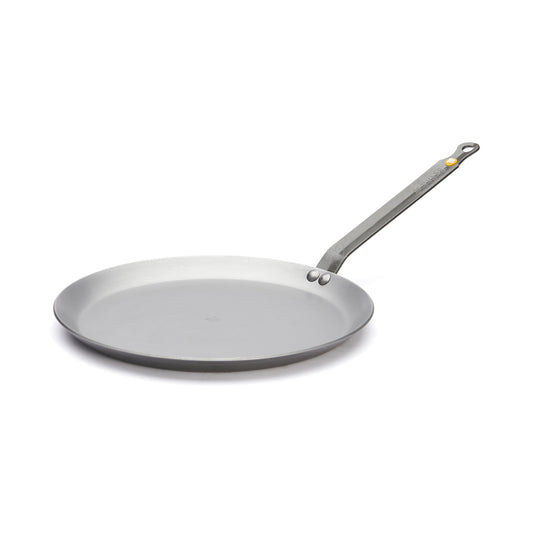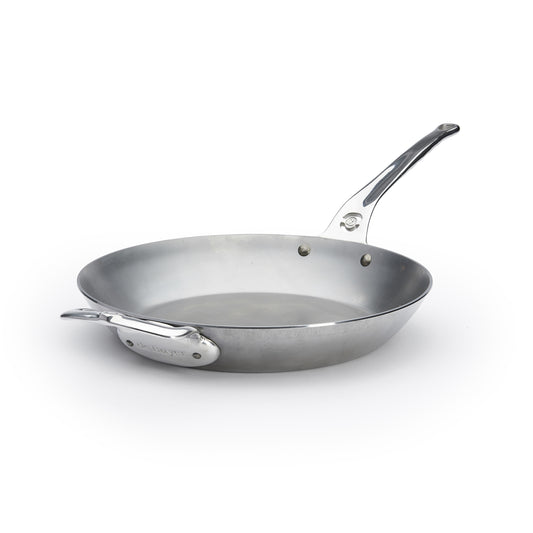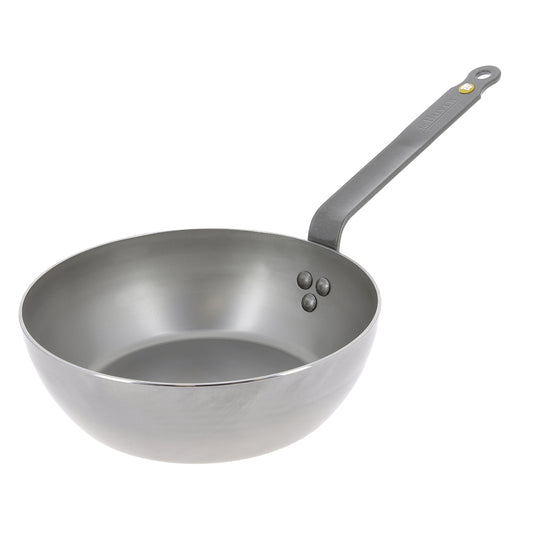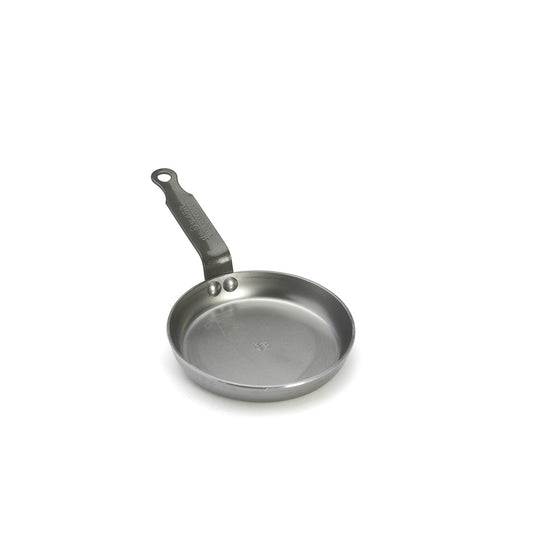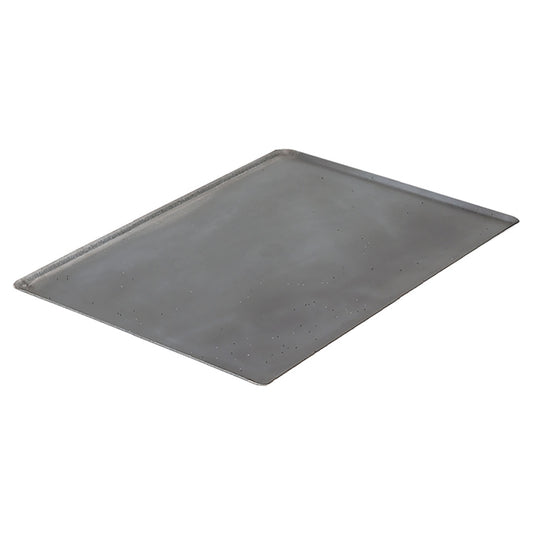How to Choose Cookware: A Step-by-Step Guide
Learn how to choose cookware for your kitchen with this step-by-step guide covering essential factors like material, durability, and heat conductivity.
de Buyer

Are you thinking about buying new cookware but aren't sure where to start? There are a lot of options when it comes to purchasing new cookware. Factors to consider include cooking efficiency, taste, and the preferred longevity of the cookware.
We've put together this guide to identifying the types of cookware, their uses, their different materials, and some budget tips to help you find the right cookware for various cooking styles.
How to Choose the Best Cookware for Your Kitchen
Learning how to choose cookware is a science as much as it is an art. Follow these steps to find the best options for your needs.
Step 1: Assess Your Cooking Needs and Kitchen Space
One of the first questions you must ask yourself when buying cookware is, what kind of meals do you cook frequently? Do you like to sear steaks or seafood? Are you a stew or soup person? Is roasting kind of your jam?
Start with the style of cooking you do the most and build your cookware collection based primarily on what you cook regularly rather than what you imagine yourself cooking. You'll get the most out of your investment.
The next aspect to consider is kitchen storage space. Do you have ample cabinet space? Is there a hanging rack available? Do you have old, worn cookware that will soon be recycled, freeing up storage? Purchasing more cookware than you have space for will result in a stressful cooking environment. Alternatively, with more space, you can afford to get specialty pans.
Step 2: Identify the Types of Cookware You Need
In order to select the best cookware, you need to know your options. Here are the most common types of cookware:
- Skillets/Fry Pans: Fry pans are great for shallow frying, searing, or sauteing meats and vegetables. Frying pans are one of the most versatile types of cookware. They come in different styles, sizes, and materials and are great for day-to-day use.
- Saucepans: When you're cooking anything that's primarily liquid, saucepans and pots excel. They come in various sizes, materials, and styles that are perfect for stewing, making soups, and simmering sauces.
- Stock Pots: These pots have wide, flat bottoms and tall sides. Stock pots are designed to simmer broths and soups, and there's more than enough room for all additional vegetables and meats.
- Dutch Ovens: These large pots are wider than stock pots and are the ideal vehicles for slow cooking, roasting, and braising. Dutch ovens are meant to seamlessly go from stovetop to oven cooking.
- Woks: Woks were designed for over-flame, flash cooking. They have a small bottom and extremely wide brim, and they’re ideal for stir-frying, steaming, and most high-heat cooking.
- Griddle Pans: Griddles are versatile and can cook larger meals on the stovetop, oven, and grill. They are a fantastic choice if you're looking to roast a chicken or even make pancakes for a crowd.
Consider versatility when choosing pans. A few high-quality pieces that can perform multiple functions may be all that’s needed. However, if one of your most frequently cooked meals is Pad Krapow Gai (Thai basil chicken) or paella, then a wok or paella pan is a must. Again, the most important factor is your specific needs.
Step 3: Choose the Right Material for Your Cookware
The right cookware material can make a world of difference. Now that you’ve made the first step of identifying the styles of cookware you might need, it's time to take a look at the different types of materials from which they are made.
As you learn about the different cookware materials, consider both the type of cooking you’re interested in and the level of maintenance you're willing to commit to.
Carbon Steel Cookware
Carbon steel cookware is lighter, easier to handle than cast iron, and tougher than stainless steel and aluminum. Chefs love carbon steel because it heats up quickly and retains heat exceptionally well.
In addition, the seasoning process with carbon steel means the more you use it, the better it performs over time. With proper care, these pans develop a nonstick surface whose characteristics make carbon steel fantastic for searing steaks, fish, and other delicate food items.
Cast Iron Cookware
Cast iron pans have been used for centuries for their durability and excellent heat retention. Made by melting iron with 2–3.5% carbon, uncoated cast iron features a rough surface that develops a natural nonstick coating when seasoned. Enameled cast iron pans eliminate this rough surfacing with a semi-nonstick enamel coating.
A cast iron skillet evenly distributes and retains heat, making it well-suited for searing, baking, and cooking. Proper care requires seasoning with oil, gentle cleaning, thorough drying, and oiling after each use to prevent rust.
Nonstick Cookware
Nonstick pans are an essential part of any kitchen, designed for easy cleanup and low-fat cooking. Most modern nonstick cookware is PFOA-free and scratch-resistant.
This cookware can be used to make eggs and cook fish as well as reheat foods, but may require more careful use at lower heat and cannot be used with metal utensils.
Stainless Steel Cookware
Professional chefs turn to stainless steel cookware because it is non-reactive, has superior heat distribution, and it’s practically indestructible. Uncoated stainless steel does a beautiful job of browning or executing the Maillard reaction.
You can also use stainless steel pots on any heat source, including induction. Stainless steel is great for boiling water for vegetables, pasta, soups, and stews. The durability, resistance to rust, and versatility of stainless steel pans make them an excellent kitchen addition. These pots and pans do require an aluminum or copper core for best heat distribution.
Copper Cookware
Copper is renowned by chefs for being one of the best conductors of heat. Copper cookware heats and cools quickly, and its excellent conductivity ensures even heat distribution throughout the pan for uniform, precision cooking. Copper is a must-have for delicate reductions and sauces cooked in the classic French style.
Copper does require regular upkeep and sometimes a stainless steel lining.
Step 4: Consider Heat Source Compatibility
Not all stove tops are compatible with all cookware. Consider your heat source before making a purchase.
- Induction: We recommend cookware made from magnetic materials (e.g., stainless steel, cast iron) for induction stovetops.
- Gas and Electric: Most materials (carbon steel, cast iron, and stainless steel) work well with gas or electric stoves.
- Oven Use: Some cookware, like cast iron and certain stainless steel pans, are oven-safe, while others, like nonstick pans, may have limitations.
Check the “about this product” information for compatibility before selecting your new cookware.
Step 5: Assess Durability and Maintenance Requirements
Most cookware materials require some level of maintenance for best performance. Even nonstick pans last longer when hand-washed. Still, different cookware has varying levels of durability and maintenance needs. You’ll want to select items that align with your lifestyle.
Cookware like carbon steel, cast iron, and stainless steel offer longevity with proper care. Carbon steel and cast iron require seasoning, while stainless steel may need occasional polishing. Nonstick cookware is easy to clean but may require gentler handling and proper heat management to prevent coating damage.
Step 6: Budget and Investment Considerations
While chef-quality cookware can be expensive, you don’t have to break the bank to find the right cookware that fits your budget.
It might be tempting to go out and find a cookware set with every pot and pan you can imagine because it has a lower price. While it’s tempting to choose cheaper cookware, investing in high-quality, durable options can save money in the long run. Additionally, you don’t need every style of cookware in your kitchen to have a well-equipped kitchen.
One of the best things to do is buy only essential, versatile cookware, such as a frying pan, a saute pan, and a saucepan, which you can use in combination for your day-to-day cooking.
A high-quality piece of cookware will not only perform better when you cook with it, but it will also be much more durable and last much longer. de Buyer’s cookware provides excellent performance and longevity at a competitive price point, offering a worthwhile investment for any kitchen. In the long run, this can save you money to buy replacement cookware.
Choose Quality Cookware for Better Cooking
There are many different styles and sizes of cookware made from many other materials that you can choose. Carbon steel, copper, nonstick, and stainless steel are all versatile materials to cook with and maintain. Investing in a handful of these quality, durable pots and pans will make cooking easier than ever before.
Are you looking for the best cookware set for your cooking needs? Explore de Buyer’s wide range of high-quality cookware, including premier products like the Mineral B Pro Fry Pan and Blue Carbon Steel Cookware.
Learn More
Recommended for You
-
MINERAL B PRO Carbon Steel Fry Pan
Regular price $90.00Regular priceUnit price / per$0.00Sale price $90.00 -
MINERAL B Classic Carbon Steel Fry Pan
Regular price $60.00Regular priceUnit price / per -
MINERAL B Carbon Steel Omelette Pan
Regular price $65.00Regular priceUnit price / per -
MINERAL B PRO Carbon Steel Omelette Pan
Regular price $105.00Regular priceUnit price / per -
Protective Sleeve for Pan Handle
Regular price $9.95Regular priceUnit price / per -
MINERAL B Carbon Steel Crepe & Tortilla Pan
Regular price $70.00Regular priceUnit price / per -
MINERAL B PRO Carbon Steel Fry Pan with Helper Handle
Regular price $145.00Regular priceUnit price / per -
 Sold out
Sold outBlue Carbon Steel Fry Pan
Regular price $45.00Regular priceUnit price / per -
Blue Carbon Steel Crepe & Tortilla Pan
Regular price $25.00Regular priceUnit price / per -
MINERAL B Carbon Steel Country Fry Pan
Regular price $100.00Regular priceUnit price / per -
MINERAL B Carbon Steel Egg & Pancake Pan
Regular price $35.00Regular priceUnit price / per -
Blue Carbon Steel Rectangular Baking Sheet
Regular price $35.00Regular priceUnit price / per












